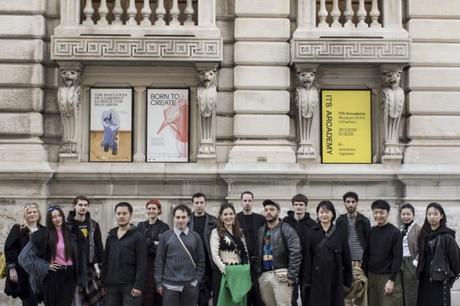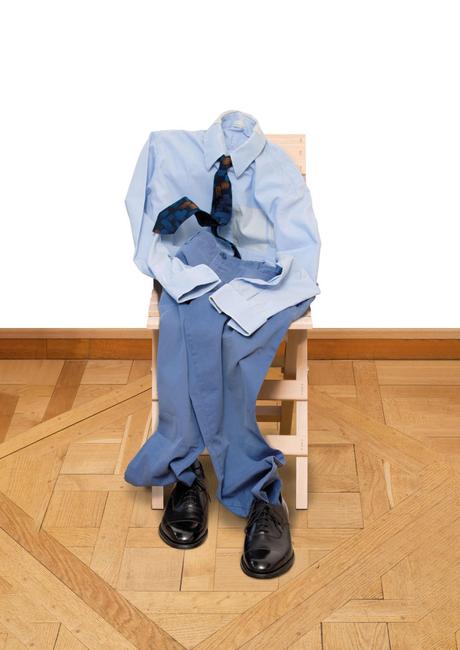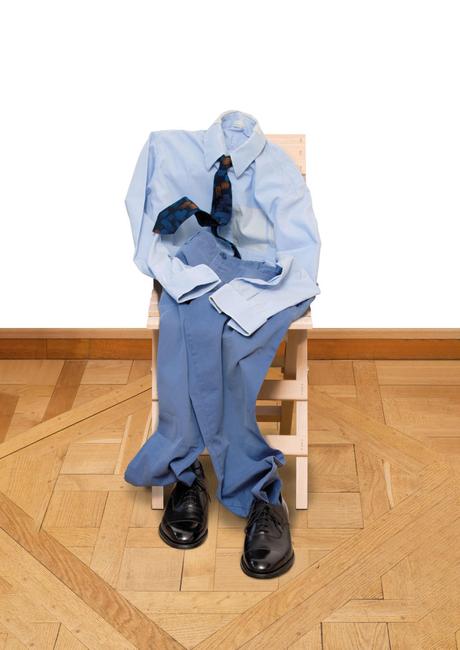
TRIESTE, Italy - "You were another strong, conscious and revolutionary generation of ITS [contestants]. Everyone gained a human and professional experience."
So says Barbara Franchin, the founder and brains of the International Talent Support fashion competition, known as ITS, showing her appreciation for the 16 finalists of the 2023-2024 edition.
More from WWDFranchin was visibly emotional. ITS has gone through highs and lows in its more than two decades, and while finding a new home in the CRTrieste Foundation spaces in 2020 seemed like a mission accomplished when it opened two years ago, Franchin's ambition to make it better and bigger to do leave her with more needs to be fulfilled.
"We need Italian fashion companies to be by our side, to share the experiences with us... knowing that we can give back the results we receive [from talents] annual. We need financial support for this operation, which is not just for us, but actually for everyone living on this planet. We need investments in culture, even if they do not provide an immediate return on the investment," she said, noting that her goal is to find a new home for ITS of approximately 75,000 to 105,000 square meters.
She pointed to the French support system for fashion competitions, without naming names but clearly looking at competitions such as the Hyères Festival, among others, which have received support from both institutional and business players.
Nevertheless, she was excited to unveil not only this year's ITS winners, but also the second exhibition in the ITS Arcademy, the competition headquarters, archives and 700 square meter multi-purpose space.
A meta-fashion exhibition that reflects on the role garments play in everyone's lives, their emotional connections and memory-generating power. The show is titled 'The Many Lives of a Garment'.
The story continues
Franchin once again brought in Olivier Saillard to curate the show, this time assisted by philosopher Emanuele Coccia. Filled with mannequins dressed in outfits from previous ITS participants, some spread around the space as if they were visitors looking at works of art, the show covered the different life stages of clothing, from being displayed in a shop window to being tried on in a dressing room, taken out by the wearer, then lost, damaged, displayed in a museum or even just described in words.
Conceptually, the show is about the idea that clothing worn every day is itself a walking exhibit, suggesting curatorial decisions, the curators noted.
"This exhibition started thirty years ago, [because] inside it are a lot of little experiments that I've done in the past, and this is the first time we're showing them all together in the same place," Saillard said.
The reason for eschewing a traditional fashion exhibition was suggested by Issey Miyake, Saillard said. "He always said that a dress is only half finished when it leaves the studio, and that it is completely finished, 100 percent, when a man or woman wears that dress," Saillard quoted the Japanese designer. "So it's always that in [fashion] exhibitions are a paradox" in the sense that they lack the input of the wearer.
For example, an entire section in the show was devoted to small frames detailing shirts owned and worn by Saillard, flanked by written text about the memories and life stories they were linked to. Two cabinets featured real outfits by Charlotte Rampling and Tilda Swinton, arranged on chairs as if ready to be collected from the wearer, while another showcase displayed a wedding dress designed by Valentino Garavani for model Alda Balestra von Stauffenberg.
This latest showcase is expected to change contents over time, as ITS Arcademy hopes that citizens of Trieste will lend their personal clothing with emotional meaning so that it can each be displayed for a month.
The exhibition's radical approach was on display in the section that collected fashion descriptions from literature - no clothes in sight. "Garments have an apparent and self-narrative power that transcends the physical presence of fabrics and the object itself," says Coccia.


A second exhibition in the Wunderkammer space was dedicated to the creations of the 2023-2024 finalists under the slogan 'Born to Create', the umbrella manifesto of ITS.
Both exhibitions are open to the public until January 6, 2025
The ITS Arcademy's curatorial approach to preserving and archiving the work of young talents as if they were already museum-worthy (a recently introduced technology-based digital book makes it possible to bring to life paper portfolios stacked in the library space through cartoon-like animations) is a testament to the ITS team's commitment to discovering and promoting the next generation of designers; it has been providing them with financial support and publicity for twenty years.
The former ITS headquarters - a small attic of an 18th-century palazzo in the city center - is waiting to be converted into living space for the city's designers and artists' residences, another project that Franchin hopes will quickly find support.
On Friday evening, the jury of the 2023-2024 edition awarded 13 prizes to the 16 finalists, who were shortlisted from 782 candidates from 65 countries.
The ITS Arcademy Award, which carries a cash prize of 15,000 euros, went to Japanese talent Momoka Sato, who presented a playful collection with a strong and extensive story, inspired by a fictional nun who lives on a mountain top with an adoring wife. monk at her side.
Rich in layering and nods to traditional Japanese accoutrements, including the kimono trouser silhouette, the collection incorporated recycling practices, for example reusing the cotton filling from old mattresses.
Sato dedicated her collection to her grandmother, whom she spent time with while working on the lineup. The young designer, a graduate of Bunka Fashion College with a master's degree from Britain's Nottingham Trent University, said she signed up with ITS to bring her brand, which was formally launched during the years of the pandemic, to an international audience to introduce.
"I didn't expect to win; Therefore, I am very honored to receive this award," she said.
Judges agreed that young creatives are increasingly looking at both the inner and outer worlds in ways that put their personal experiences into perspective and engage in dialogue with socio-political, cultural and anthropological topics.
"They are much more sensitive to absorbing everything that is happening in the world," says Valentina Maggi, creative practice director at Paris-based consultancy and headhunting firm Floriane de St Pierre & Associès and jury member, which also included curator Thierry. -Maxime Loriot and creative director Stefano Gallici of Ann Demeulemeester.
"Creative processes used to be much more individual, while today they are open to and involved in the social and cultural conversations that are happening," she added.
According to Valerie Steele, director of The Museum at FIT, a long-time jury member at ITS, the self-perception of fashion creatives is shifting.
"I think they feel more like they're in an artistic field, and they're not always so pretentious to say I'm an artist, but they do feel like fashion is something that's creative, artistic field . And so they still want to be able to follow their own creative directions, like a painter or a musician would, for example. It therefore makes much more sense to mine their own life history based on personal interests," she said.
"It is more idealistic and realistic than in previous generations. They are aware of all kinds of dangers and needs in fashion," Steele said. "They are aware that many people of their generation [think that] fashion is bad, fashion is exploitative, it is destroying the world... But they also feel like they can have an impact. And they can do something that takes the best aspects of fashion and improves on the bad aspects," she added.
"I have been struck by how all these talents, none excluded, are so careful and feel such urgency to telegraph their positive impact within the fashion system, with social consciousness. [messages] and sustainability practices," echoed Gallici from Ann Demeulemeester.
"This past week, during their residency here, we talked much more about the meaning of life and its urgency to prevent negative impacts on the planet than about design and silhouettes," Franchin explains. "They know that our generation won't do much more to save the planet, assuming someone else will [it]and they know they are the ones who need to address these issues."
Franchin underlined how fashion talents increasingly see themselves as artists who use fashion as just one of many mediums to explore. "I have seen the aspirations of young children evolve from 'I want to be John Galliano' and 'I want to be an all-around creative director' to 'I want to be an artist,'" Franchin emphasized.
"These young people do not see a bright future like previous generations, but they are able to transform this 'black energy' into a positive force," says Matteo Battiston, Chief Design Officer at EssilorLuxottica, noting how socially charged the creative projects were. . "What emerges from these competitions speaks of generational changes, where the dream of becoming a top creative within a legendary house is no longer so attractive; their goal is for their work to be the best and truest representation of themselves."
The ITS Jury Special Award, a cash prize of 5,000 euros, was jointly awarded to Chinese designer Ju Bao for his groundbreaking denim-like knitwear, and to jeweler Richard Farbey from Great Britain. A new prize of 10,000 euros, supported by the Friuli Venezia The Giulia region, as Trieste prepares to become the 2025 Capital of Culture, was presented to Tomohiro Shibuki, who upcycled vintage sportswear by needle felting all pieces for a matte effect.
Other prizes included the ITS Responsible Creativity Award, sponsored by Camera Nazionale della Moda Italiana, which awarded 5,000 euros to Italian creative Ivan Delogu, who unveiled a collection made from recycled plastic curtains, deadstock fabrics and other recycled materials to to explore the matriarchal society of his native country. region, Italian Sardinia.
Other prizes were sponsored by ITS partners including the Swatch Art Peace Hotel, Wråd, Lotto Sport, Vogue Eyewear and EssilorLuxottica, as well as Fondazione Ferragamo, Pitti Immagine and Fondazione Sozzani.
The best of WWD